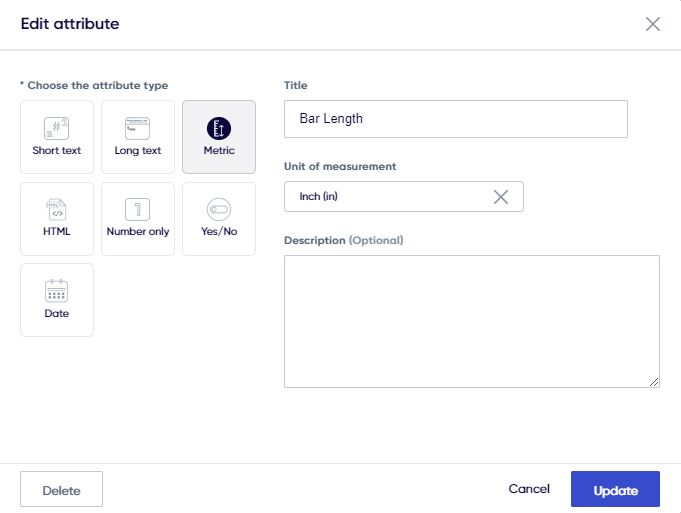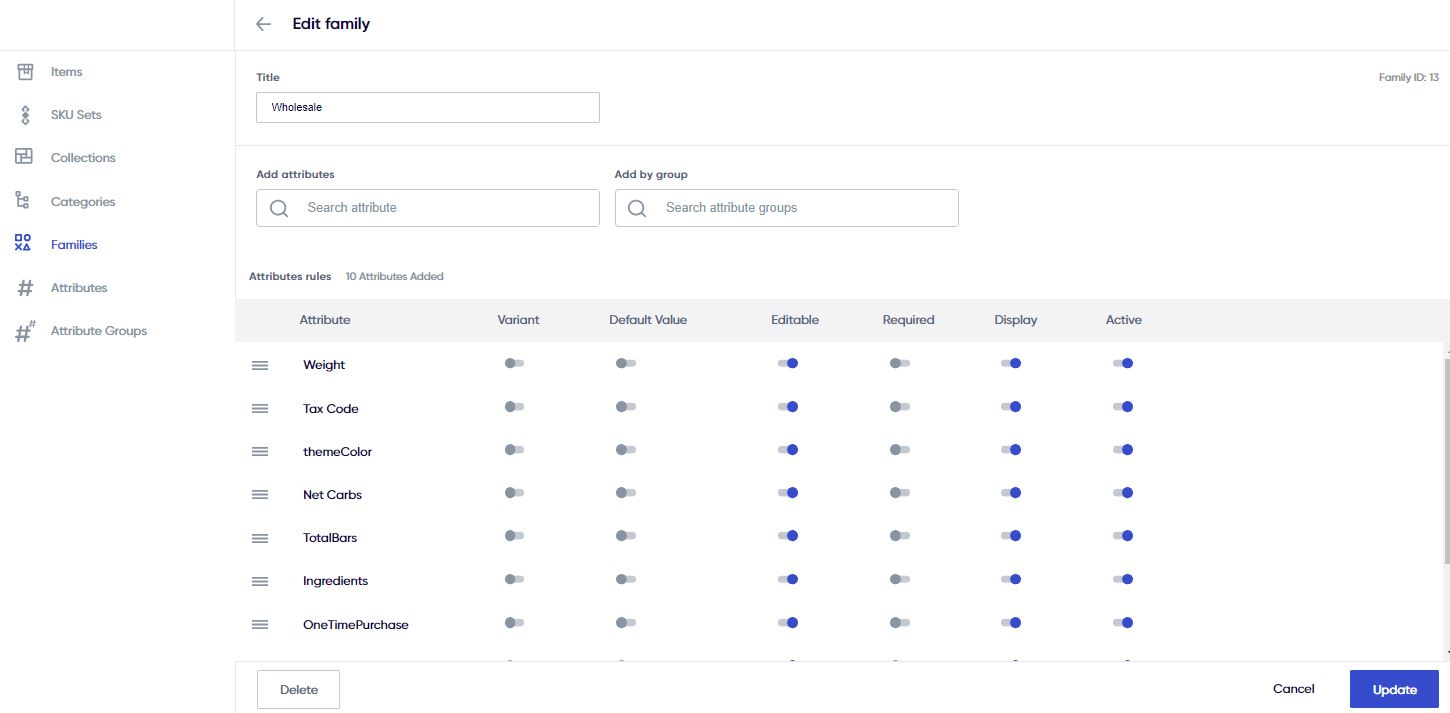How Do You Optimize Product Attributes with PIM Software?

[toc-embed headline=” fabric PIM: Your Tool for Scaling Faster”]Product attributes are a set of data elements that define the characteristics of your items. Some common examples are size, color, and flavor.
Product attributes bring organization to your product management. They keep data consistent and help bring items to market faster. From a customer’s perspective, attributes are essential because they refine the results to only include items that match.
The best way to manage your product attributes (and all your product data) is to use standalone product information management (PIM) software. PIM gives you a centralized tool for managing attributes along with a user-friendly interface for easy edits.
In this post, we’ll break down the steps needed to optimize your product attributes using fabric PIM.
[toc-embed headline=”Optimizing Product Attributes with PIM”]
Optimizing Product Attributes with PIM
Select the right attribute type
With PIM software, you must select a type for each attribute. The attribute type is used to determine what kind of data input the attribute supports. Here are some examples of attribute types:
- Text: The attribute appears as short or long-form text. You can format the text using bold type, bullets, and more.
- Metric: With this attribute type, you select a unit of measurement. The attribute is then represented as a numerical value of that unit.
- HTML: The HTML attribute type supports HTML code as the input.
- Number only: The attribute is represented as a decimal. Users can specify a range for the number.
- Boolean: The attribute represents a value of true or false.
- Date: This attribute uses a calendar feature that allows you to specify a date.
Choosing the right attribute type ensures that the data is available in a usable form.

Define attribute properties
Every attribute has a set of properties. These properties depend on the selected attribute type. Some of the available properties include:
- Title
- Description
- Calculation formula
- Validation formula
- Mandatory
- Set a range
Properties can be required or optional based on the attribute type. You can see which properties are compulsory by checking out the PIM knowledge base.
How you handle your properties plays an essential role in your product management. For example, by making an attribute mandatory, you improve data quality by ensuring it is not missed during the enrichment process. You can also improve data integrity by enabling a validation formula.
Create attribute groups
With PIM, you can manage attributes more efficiently by creating groups. Here are some common ways of grouping product attributes:
- Physical attributes: size, weight, dimensions, flavor
- Technical specifications: memory size, charger type, waterproof
- Logistics attributes: shipping date
The process of creating attribute groups using PIM is straightforward. You navigate to Attribute Groups and click Create an attribute group. You will then go to a page with a list of all your attributes. Each has a checkbox, allowing you to add it to the group. There is also a search function to help you find the appropriate attributes faster.

Once you’ve created an attribute group, you can assign it to a family with a few clicks. A family is a set of attributes that are automatically applied to products in that family. They speed up product enrichment, as they save you from adding attributes to every item manually.

fabric PIM: Your Tool for Scaling Faster
Attributes are critical for product data management. It is also vital to have clear hierarchies, robust variants, versioning, and bulk actions. Take advantage of fabric PIM to support all these features and scale products to any channel without limitation.
Tech advocate and writer @ fabric.